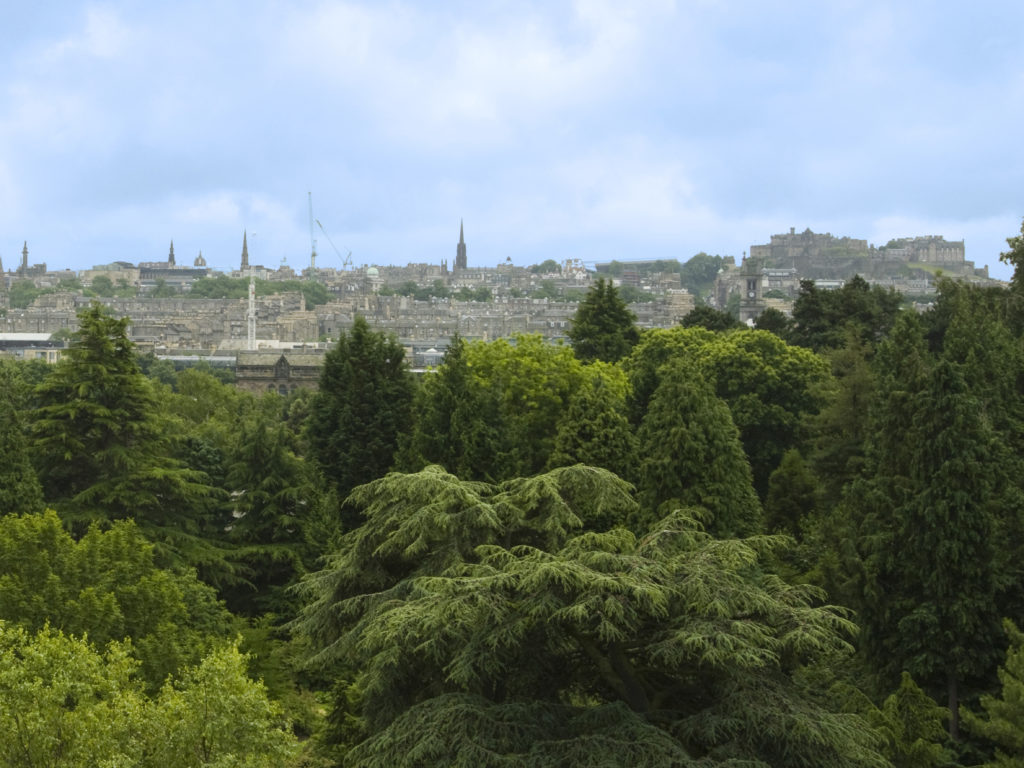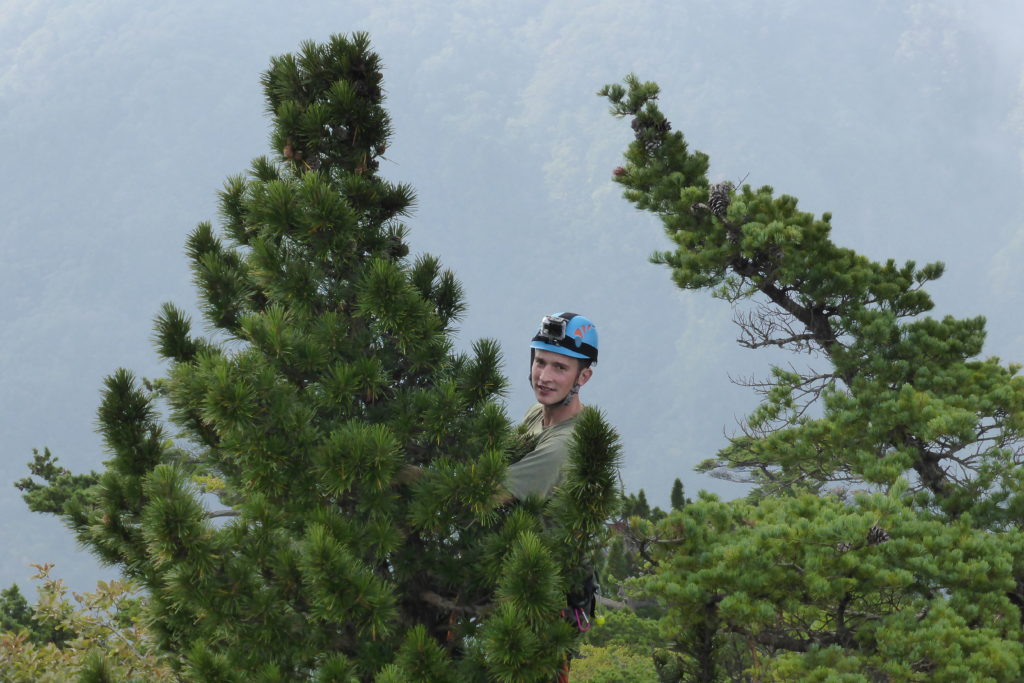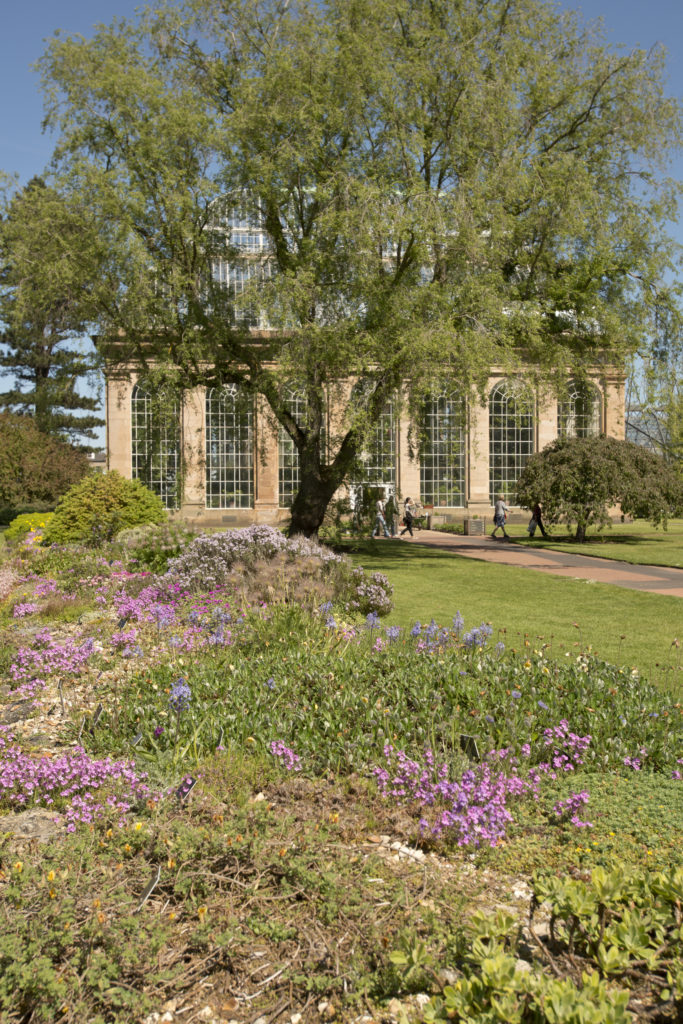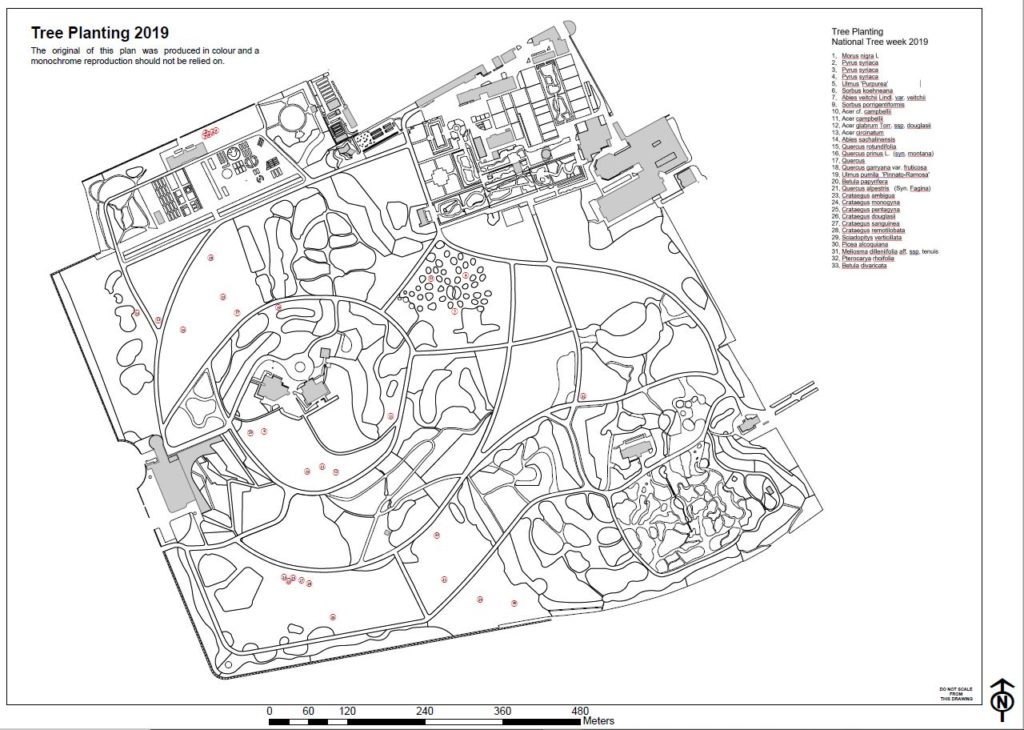National Tree Week marks the traditional start of the winter tree planting season. We are celebrating from the 23rd November to the 1st December.
“National Tree Week is the UK’s largest tree celebration, inspiring communities across the UK to plant thousands of trees every year since 1975.The campaign has its roots in the response to Dutch Elm Disease crisis of the 1960s, which wiped out more than 20 million of our most significant landscape trees. People came together to “Plant A Tree in ‘73”, and every year since, organisations, professionals, schools and our amazing network of volunteer Tree Wardens have planted trees around the country to lay down roots for a tree-filled future.” – https://www.treecouncil.org.uk/Take-Part/National-Tree-Week
Trees are high on the conservation agenda. RBGE’s work both in biodiversity discovery science and conservation horticulture is shifting focus to ensure we can provide the knowledge and expertise to find solutions to address the Biodiversity Crisis and the Climate Emergency.
Trees are also high in the public’s agenda and many organisations are embracing tree planting and setting ambitious targets to capture carbon. Tree planting is a long term undertaking that needs to be well planned and strategic. New tree plantings must be ecologically resilient to provide the long term benefits that we plan for them to deliver.

Here at the Royal Botanic Gardens Edinburgh we have unique collection of trees from around the world. All of the trees are recorded on our plant records database and a quick query reveals the current count to be 3512.!That’s 3512* individual trees in 57 Families, 148 Genera, 785 Species and 1068 taxa all crammed into 70 acres 1 mile from the centre of Edinburgh. They are an important scientific and cultural heritage resource but also an important green space in the city.

This week we will be planting 33 significant new trees across the Garden. We have a unique pallet of trees to go out from 12 different countries. All of the trees are either grown from seed collected directly from the wild or propagated from heritage trees in the collection.
Whilst all of the trees are interesting it is worth highlighting five that give a flavour of the work we are carrying out.
Acer campbellii
This particular tree is grown from seed collected on the Britain Nepal Bicentenary Expedition to Rasuwa in 2016 form mixed forest dominated by Tsuga dumosa near the sacred lake of Parvati Kund.
Acer campbellii is a relatively tender species but the provenance of this particular collection we hope will allow us to grow it. Much of what we grow is highly experimental and this is how we learn about plant growth requirements, propagation requirements and plant resilience.
RBGE leads the international partnership that is working on the first comprehensive account Nepal’s plant biodiversity
https://www.rbge.org.uk/science-and-conservation/major-floras/flora-of-nepal/
Sciadopitys verticillata
Sciadopitys verticillata is endemic to Japan it is classified as near threatened. In 2013 we carried out a collecting trip to Japan to target threatened Conifers. 8 distinct collections were made of Sciadopitys verticilata. Plants raised from the 8 collections are being distributed through the Conifer Conservation Programme along with other threatened conifers collected on the same trip including the critically endangered Picea koyamae.
https://www.rbge.org.uk/science-and-conservation/genetics-and-conservation/conifer-conservation/

Betula divaricata
Collected on the Edinburgh, Howick Expedition to East Russia in 2015 this will be the first time we have grown this species. The species name, divaricata, is Latin, meaning “spreading” or “growing in a straggling manner” The collection notes record it as growing in full sun in a moist area at the edge of the lake between water and stunted Quercus mongolica woodland with Rhododendron sikhotense, Cornus canadensis and Osmunda cinnamomea. It is sometimes difficult to find places for these dwarf Birches with specialist growth requirements within the garden but we are trailing it in the newly created rain garden. We hope that it will be well suited.
https://www.rbge.org.uk/media-centre/press-releases/current/raingarden/
Ulmus pumila ‘Pinnato-Ramosa’
This tree is a propagule of a larger specimen growing between the palm House and the Alpine yard. The original tree was obtained from Spath Arboretum in 1902 and is thought to have been grown from seed collected in the Ili Valley in what is now Kazakstan. There are thought to be very few trees from this collection left in cultivation. The tree was propagated by the technique of air layering . Propagating from our heritage trees in an essential way of ensuring they remain within the collection. We also learn and develop propagation protocols that can be applied to other threatened species by carying out this work.

Quercus rotundifolia
This tree has been grown from seed collected in the Rif mountains of Moroco. It is an evergreen Oak that is native to the Mediterranean region it is tolerant of low and high temperatures. Broad leafed evergreen trees tolerant of difficult growth conditions are great trees for the urban environment. The have great noise buffering properties and because they are in leaf all year they are excellent at intercepting particulate pollution. In the garden careful placement of evergreen trees is used to create visual foils that shape the views in the garden as well as providing important shelter from the wind for more tender plants.
The traditional winter tree planting season runs from November through to March, so if you miss National Tree Week there is still plenty of time to get trees in the ground.

Careful planning to choose the right location for the right tree that considers the future landscape and the Gardens themes is essential. Here is our planting map. Exact locations are marked with posts and often cause much debate!
*The number rises to 4996 if we include the collections held at Benmore, Logan and Dawyck. This is an underestimate caused by the way the record keeping distinguishes a tree and not all trees on the properties being accessed trees but still being part of the collection.
